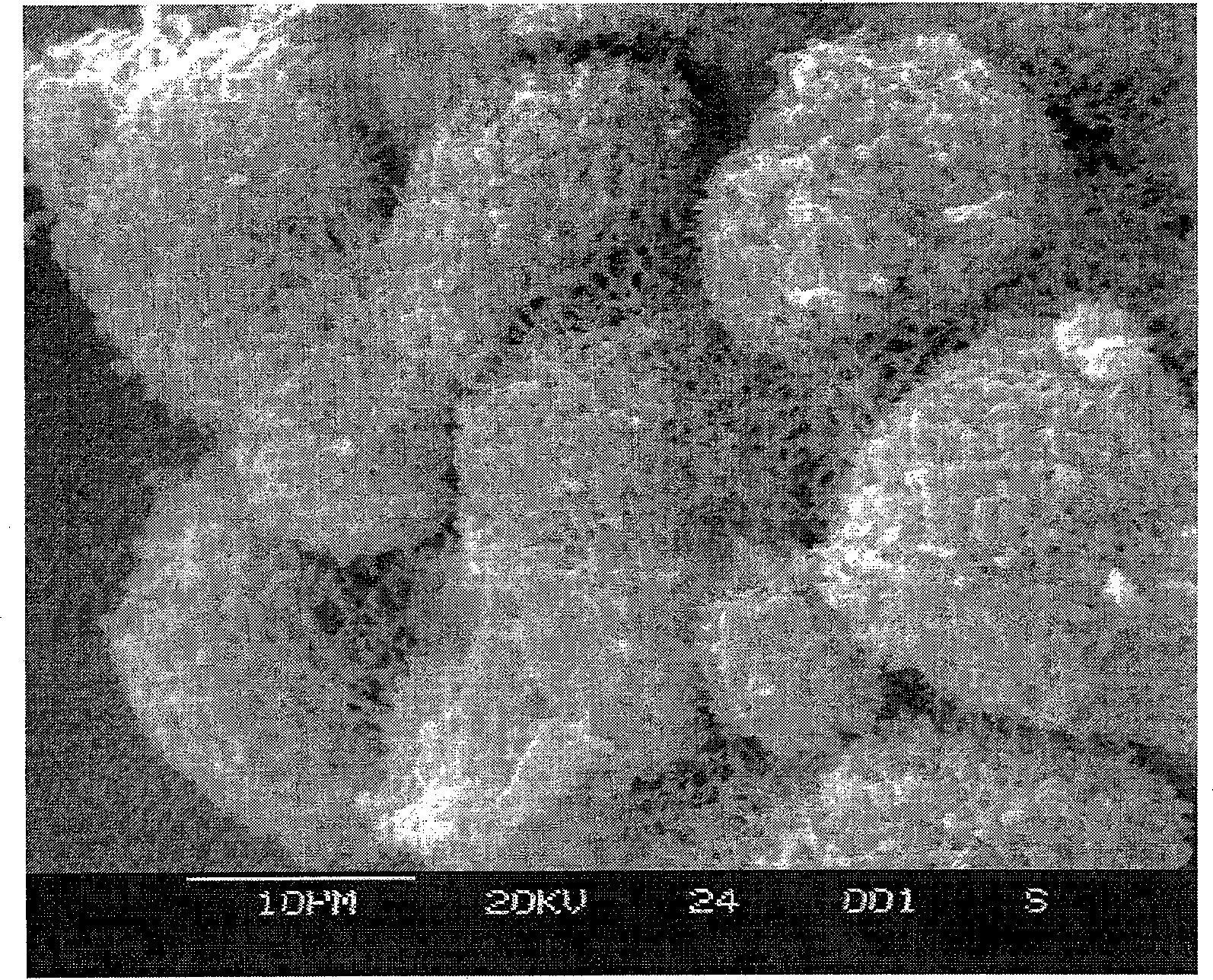Preparation process of porous polypropylene microparticle
A technology of polypropylene and microparticles, which is applied in the field of preparing porous polypropylene microparticles, and can solve problems such as the inability to obtain porous high polymers, the complexity of the polymerization reaction system, and the lack of industrialized methods for porous polypropylene.
- Summary
- Abstract
- Description
- Claims
- Application Information
AI Technical Summary
Problems solved by technology
Method used
Image
Examples
Embodiment 1
[0021] Add 800 L of chloroform and 6 kg of Span 80 to both 2000 L enamel reaction kettles A and B, start stirring, so that Span 80 is evenly dissolved in the chloroform. Then, put 36kg of isotactic or syndiotactic polypropylene into the reactor A, gradually increase the temperature to 100°C-120°C while stirring, and keep it warm for 1 hour, so that the polypropylene is completely dissolved in chloroform to form a polypropylene solution . While the materials in the reactor A are kept warm, circulate cooling water into the jacket of the reactor B to keep the temperature of the solution in the kettle below 20°C for standby use.
[0022] After the insulation of the polypropylene solution in the reactor A is completed, the solution is maintained at the insulation temperature, and then, the bottom valve of the reactor A is opened, and the polypropylene solution is transferred from the bottom of the reactor B to the reactor B through the pipeline by the pressure difference. Under th...
Embodiment 2
[0025] Add 800 L of chloroform and 60 kg of Span 80 to both 2000 L enamel reactors A and B, and start stirring to make Span 80 evenly dissolve in the chloroform. Then, put 360kg of isotactic or syndiotactic polypropylene into the reactor A, gradually increase the temperature to 110°C-120°C while stirring, and keep it warm for 2 hours, so that the polypropylene is completely dissolved in chloroform to form a polypropylene solution . While the materials in the reactor A are kept warm, circulate cooling water into the jacket of the reactor B to keep the temperature of the solution in the kettle below 20°C for standby use.
[0026] After the insulation of the polypropylene solution in the reactor A is completed, the solution is maintained at the insulation temperature, and then, the bottom valve of the reactor A is opened, and the polypropylene solution is transferred from the bottom of the reactor B to the reactor B through the pipeline by the pressure difference. Under the cond...
Embodiment 3
[0029] Add 800 L of chloroform and 12 kg of Span 80 to both 2000 L enamel reactors A and B, and start stirring to make Span 80 evenly dissolve in the chloroform. Then, put 120kg of isotactic or syndiotactic polypropylene into the reactor A, gradually increase the temperature to 110°C-120°C while stirring, and keep it warm for 2 hours, so that the polypropylene is completely dissolved in chloroform to form a polypropylene solution . While the materials in the reactor A are kept warm, circulate cooling water into the jacket of the reactor B to keep the temperature of the solution in the kettle below 20°C for standby use.
[0030] After the insulation of the polypropylene solution in the reactor A is completed, the solution is maintained at the insulation temperature, and then, the bottom valve of the reactor A is opened, and the polypropylene solution is transferred from the bottom of the reactor B to the reactor B through the pipeline by the pressure difference. Under the cond...
PUM
| Property | Measurement | Unit |
|---|---|---|
| specific surface area | aaaaa | aaaaa |
| pore size | aaaaa | aaaaa |
| particle diameter | aaaaa | aaaaa |
Abstract
Description
Claims
Application Information
 Login to View More
Login to View More - R&D
- Intellectual Property
- Life Sciences
- Materials
- Tech Scout
- Unparalleled Data Quality
- Higher Quality Content
- 60% Fewer Hallucinations
Browse by: Latest US Patents, China's latest patents, Technical Efficacy Thesaurus, Application Domain, Technology Topic, Popular Technical Reports.
© 2025 PatSnap. All rights reserved.Legal|Privacy policy|Modern Slavery Act Transparency Statement|Sitemap|About US| Contact US: help@patsnap.com


